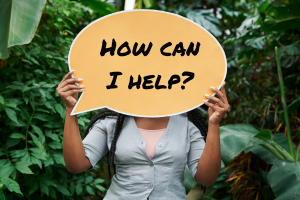Saving Lives from Suicide During a Pandemic
 There are ways to intervene and help one another through the darkest of times.
There are ways to intervene and help one another through the darkest of times.
The current crisis we’re enduring with Covid-19 is taking a toll on more than our physical well-being. A recent Kaiser poll showed that nearly half of Americans feel the coronavirus crisis is harming their mental health. Suicide and crisis call and text hotlines have reported “unprecedented” spikes in the number of calls they receive, and many are concerned this could mean a rise in suicides.
The suicide rate in the United States has already been increasing, with the latest available data from 2018 showing it at an 80-year high. With the pandemic creating an increase in certain risk factors for suicide, an April journal article in JAMA Psychiatry questioned whether suicide mortality and the coronavirus pandemic could create a “perfect storm.” Their concerns included increased economic stress and social isolation, decreased access to community and religious support, barriers to mental health treatment, a rise in illness and medical problems, national anxiety outcomes, suicide rates of health care professionals, and a surge in firearm sales.
Yet, a new set of challenges can be met with a new way of talking about suicide and reaching out to those who are in crisis. A rise in suicide should be treated as a concern, but it should not be treated as inevitable. There are ways to intervene and help one another through even the darkest of times. The suicidal state is almost always transient and temporary. Like getting through a pandemic, a suicidal person must access ways to stay safe until the danger has passed. If a person can connect to effective tools to cope when they’re in crisis, they can stay alive. I have heard countless stories of hope and met countless people who have attempted suicide. They got the help they needed and are now living meaningful lives that they treasure.
What are some proactive ways we can address the subject of suicide head on and take life-saving measures? For starters, the JAMA report emphasized the following strategies:
- Distinguishing physical distance from social distance
- Connecting people to tele–mental health
- Increasing access to mental healthcare
- Educating people on evidence-based suicide prevention interventions designed to be offered remotely
- Enforcing safe media reporting guidelines
Each of these approaches reflect realistic, evidence based strategies that can help prevent suicide.
In addition, campaigns like #BeThe1To, developed by the National Suicide Prevention Lifeline, are part of an effective, coordinated strategy embraced by researchers and experts in the field of suicidology that can help save a life from suicide. #BeThe1 breaks down five simple steps anyone can take to help someone at risk for suicide. Learning these steps can make a person more confident to reach out to someone in trouble and can, ultimately, save their life.
You can learn more about the steps of #BeThe1To here, but they include:
1. Ask – When we’re worried about someone, we should be direct in asking them if they are okay and if they are thinking about suicide. We should listen without judgment, offer our full attention and ask, “How can I help?” We can support them by helping them focus on their reasons for staying alive.
2. Keep them safe – We should stay connected to the person until they reach help. We can try to find out if they’ve taken any suicidal actions and if they have a plan or access to a method. We should try to get them to remove any lethal means that they could use to hurt themselves. The goal is to do anything we can to put time and distance between the person and their method. Keeping a person safe while they’re in this state can help them get through it.
3. Be there – One of the ways to help protect someone who’s feeling suicidal is to make them feel connected. Make sure they know that they can ask you for help whenever they’re in trouble. Always be a good listener and help them identify other people they can turn to for help as well as ways they can stay connected to those people.
4. Help them connect – We should do what we can to get the person to the help they need. We can help them find a counseling center or a therapist in their area as well as tele-mental health options. In addition, many therapists are now offering remote sessions in these new circumstances.
Make sure the person can reach the National Suicide Prevention Lifeline number, which offers 24/7 confidential support for people in crisis as well as a web chat that connects individuals with counselors for emotional support and other services. We can even be on the call with them. There are many suicide prevention resources (listed at the end of this post) that can also help a person stay safe. These include text and chat lines as well as phone apps.
Making a safety plan can also be a life-saving device for someone whenever they’re in distress. We can help the person make a plan that will remind them how to help themselves and reach out in order to stay safe. We should make an effort to help the person consistently connect to strategies that have helped them feel better in the past. Support them in reconnecting to their positive feelings and desire to stay alive.
5. Follow up – We should keep checking in with the person and let them know we’re there whenever they need us. Being there for them when they’re in a self-destructive state can help them get through the dark moment they’re experiencing until they can reconnect to a part of themselves that wants to live.
Learn more about these steps here.
With isolation as a risk factor for suicide, people need to know that even at a physical distance, they are not alone. Checking in with loved ones on a consistent basis, using safe methods of communication, in which we voice feelings of care, concern, and interest really matters right now for all of our mental health. In addition, we should be aware of the many free services available, including the National Suicide Prevention Lifeline. Keeping up the conversation and communication around suicide and mental health, reinforcing stories of hope, and a message that we can get through this together is a key part of staying safe and connected in this challenging time. And for someone in a suicidal state, it could mean the difference between life and death.
Click here to locate a therapist in your area.
Resources: Phone, Text and Chat Lines, Apps, and Webinars
National Suicide Prevention Lifeline (Call or Chat Online)
If you — or someone you know — need help, please call 1-800-273-8255 for the National Suicide Prevention Lifeline. The line is available 24/7 at 1-800-273-TALK (8255), and their website also has an online chat feature. You can contact them anytime if you’re worried that you or someone you know may be in crisis.
If you are outside of the U.S., please visit the International Association for Suicide Prevention for a database of international resources.
Crisis Text Line
There is a 24/7 Crisis Text Line available, where you can text trained crisis counselors. The text line is free and confidential and can be reached by texting “GO” TO 741741.
APPS
There are many APPS available that have been created to help people access the resources and tools they need when they’re in distress. These include: ASK and Prevent Suicide, Suicide Crisis Support, Virtual Hope Box, and My3 Safety Plan App.
WEBINAR – Watch a free Webinar with the Director of the National Suicide Prevention Lifeline, Dr. John Draper, discussing effective methods to help a suicidal person
National Suicide Prevention Lifeline number 1 (800)-273-TALK (8255








